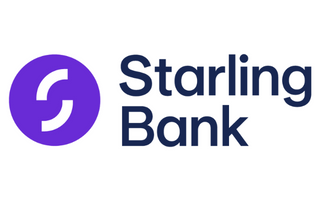
Debit cards give you convenient access to funds in your current account. But sometimes you don’t even need a physical card – with a virtual debit card you can easily access your money when spending online or by using your smartphone at the checkout. We also have a guide on virtual credit cards.
Compare virtual & disposable debit cards from digital banks
Finder Score for bank accounts
To make comparing even easier we came up with the Finder Score. Fees, features and customer service across 20+ of the most popular banks are all weighted and scaled to produce a score out of 10. The higher the score the better the account – simple.
Read the full methodologyWhat is a virtual debit card?
A virtual debit card is essentially a digital version of a plastic debit or prepaid card. Most have randomly generated numbers for added security when shopping online or over the phone. If the number is compromised, you can quickly cancel the virtual card and generate a new number without losing access to your entire account.
Reviews of bank and e-money accounts that offer virtual cards

Revolut Standard
9.1 ExcellentIf you open a Revolut account, you can choose from physical, virtual and disposable cards. You can have up to 20 active virtual cards and 1 disposable card linked to your account. With a multi-use virtual card, the card details are stored on the app and you can use it instantly for online purchases and in-person payments with Google or Apple Pay. You can also freeze it at any time and order a new card for free. If you have a single-use virtual card, this regenerates with a new, unique card number after each use, making it ideal if you're worried about security when shopping online.

Starling Current Account - Age 18 and over
9.6 Excellent| Minimum opening balance | £0 |
|---|---|
| Account fees | £0 |
| Interest (AER) | 0% AER |
Starling's virtual cards work like normal debit cards but they are linked to your account's Savings Spaces. You can create them for free as part of your current account and when you spend, the money is taken out of your chosen Space instead of your main balance - for example, you might have one Savings Space for holiday spending and another for food costs. This makes it easier to budget and keep on top of your spending. Each virtual card has its own card number, CVV and expiry date linked only to the Savings Space. You can create up to 5 virtual cards for each account and choose a different colour for each card.
Representative example: If you use an arranged overdraft of £1,200, you'll be charged interest at 15% EAR variable.
| Minimum opening balance | £0 |
|---|---|
| Account fees | £0 |
| Interest (AER) | 0% AER |

Monese Free Account
6 Standard| Minimum opening balance | £0 |
|---|---|
| Account fees | £0 |
| Interest (AER) | 0% AER |
Every Monese customer can replace a virtual card 3 times in one month. You can use your virtual card immediately and add it to Apple Pay or Google Pay. It's easy to create your virtual card within the Monese app. Your card will come with a unique 16-digit number which is different from your physical debit card. You can then use it to make payments online or shop in store via Google and Apple Pay. The app will also notify you of all your transactions and you can easily lock and unlock your card. Virtual cards can also be linked to your PayPal account.
| Minimum opening balance | £0 |
|---|---|
| Account fees | £0 |
| Interest (AER) | 0% AER |
Where to get a virtual debit card
There are three different ways to get a virtual card:
1. A prepaid card
The first type of virtual debit card is just a number that you use to securely shop online and is usually linked to a prepaid account. These card numbers remain active for certain periods of time or can only be used for certain websites, so they are more secure than using a single debit card for all of your online shopping. Learn more and compare prepaid cards and children’s prepaid cards.
2. A digital wallet
The second type of virtual debit card is a version of your debit card that exists in a digital wallet, such as Apple Pay, Google Pay or a banking app. You access the virtual debit card from your digital wallet and pay using contactless payment technology, just like you would with your physical card. You can also use it to withdraw cash at a cardless cashpoint.
3. A digital bank
Some digital banks assign you a virtual debit card immediately after your application is approved, so you can start using it while you wait on your physical card to come in the mail. Most virtual cards have a different number than your physical debit card, so you can easily cancel it if it gets compromised. Popular digital banks include Starling, Revolut and Monzo.
The differences between a digital, virtual and disposable debit card
A virtual debit card is essentially a card number you can store on your phone and use to make contactless payments in store or online. It will also come with its own expiry date and CVC (card verification code), so it’s easy to cancel if it gets compromised.
On the other hand, a digital card is a copy of your physical debit card which means it will have the same number, expiry date and CVC. Again, you can store this information on your phone and then use Apple Pay or Google Pay to make contactless payments.
A disposable card is one that can only be used once. Once you’ve made a payment with it, no further payments can be made, so if anyone else gets hold of the number, they won’t be able to use it.
The difference between a single-use virtual card and a multi-use virtual card
As its name suggests, a single-use virtual card can only be used once. It has a unique number that can only be used for one transaction. This can make it ideal if you’re making a purchase on a website that’s new to you or if you’re concerned about online security. If a fraudster gets hold of your card details after you’ve paid, they can’t do anything with them. You won’t be able to use your card for recurring payments or subscriptions, but you can still get a refund for your purchase even after the card has been used.
By contrast, a multi-use virtual card can be used more than once. You can usually use the card details to make online purchases and pay for subscriptions, plus you can make in-person contactless payments via Apple Pay and Google Pay.
How to set up a virtual debit card
If you want to set up a virtual debit card, you’ll need to sign up with a provider that offers one. Many of these providers are app-based and you can usually create a virtual card within the app with ease. There will typically be a ‘Cards’ tab which you can tap and then select to add a new card. Once set up, you should be able to use your card straight away.
Pros and cons of using a virtual debit card
- Security. If you’re using a virtual debit card that generates a random card number, this will help keep your funds secure when shopping online.
- Convenience. You won’t need to bring a physical debit card with you to complete transactions in-store. You can pay with your smartphone.
- Speed. You won’t need to wait for a card to be delivered when you sign up for a new account or if your card expires. With the new digital banks, you may be able to use your virtual card as soon as your account is active.
- Card options. There are single- and multi-use virtual debit cards available to suit your online payment needs, and you can use a prepaid card or link it to your bank account or credit provider.
- Currency options. Some providers also offer multi-currency prepaid debit cards, allowing you to save on currency conversion fees when buying from overseas retailers.
- May not work in-person. Some physical stores don’t accept contactless payments yet, so there may be restrictions on where you can use a virtual debit card that’s tied to a digital wallet.
- Card limits. Financial institutions commonly set limits for how much you can put on a contactless card in a single purchase, so keep this in mind when comparing your options.
Bottom line
Virtual debit cards are quickly gaining in popularity, but it’ll be a while before contactless cards are accepted everywhere. If you’re interested in using one, compare bank accounts to find one with virtual and contactless card options.
Frequently asked questions
More guides on Finder
-
LHV Bank review: An app-based current account
Learn more about LHV Bank’s new current account and how you can earn interest on your everyday money.
-
Best banks and bank accounts in the UK 2025
Use our guide to compare the best banks in the UK and find out how to choose the right bank account for your needs.
-
Revolut Ultra review
Learn more about Revolut Ultra, the new plan from Revolut.
-
NatWest Premier Reward current account review
Find out whether the NatWest Premier Reward current account could be worth switching to.
-
NatWest Reward current account review
Find out how the NatWest current account works and whether it’s right for you.
-
Lloyds Platinum current account review
Find out how the Lloyds Platinum current account works and its pros and cons.
-
Club Lloyds current account review
Discover what the Club Lloyds current account has to offer in our review.
-
Best current accounts & debit cards with cashback in the UK 2025
Learn how current accounts with cashback work, whether they’re right for you and how to find the best current account.
-
Revolut Plus review
Revolut Plus is the latest account to be offered by digital banking brand Revolut – we take a look at its features and fees.
-
Revolut Premium review
We review the benefits and costs of Revolut’s Premium account option, to see how it compares to the free Standard version.
